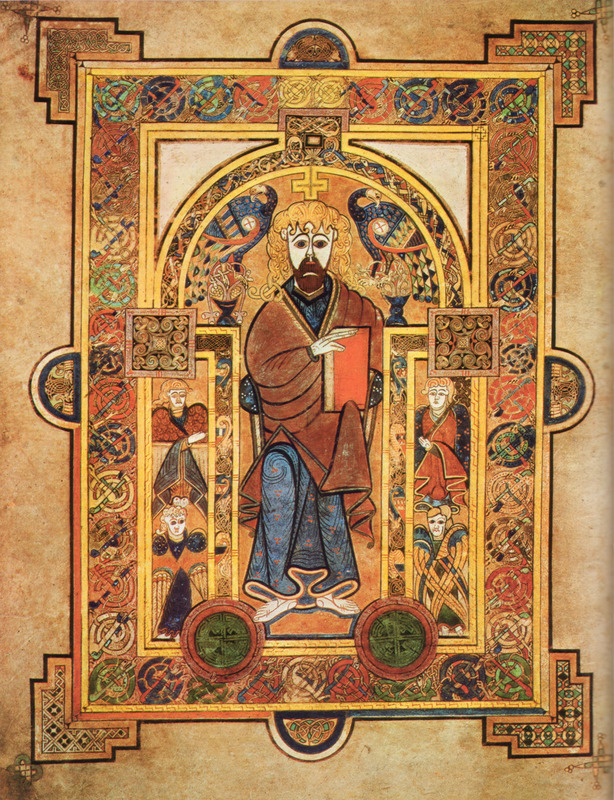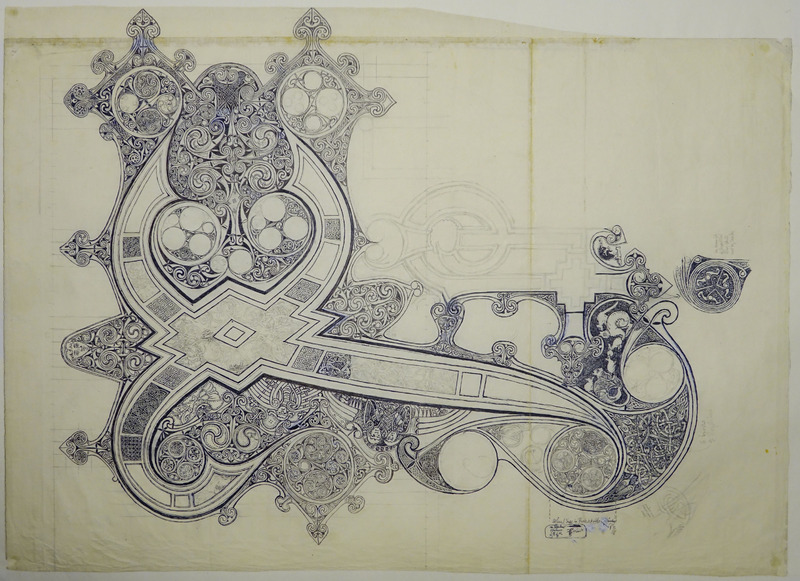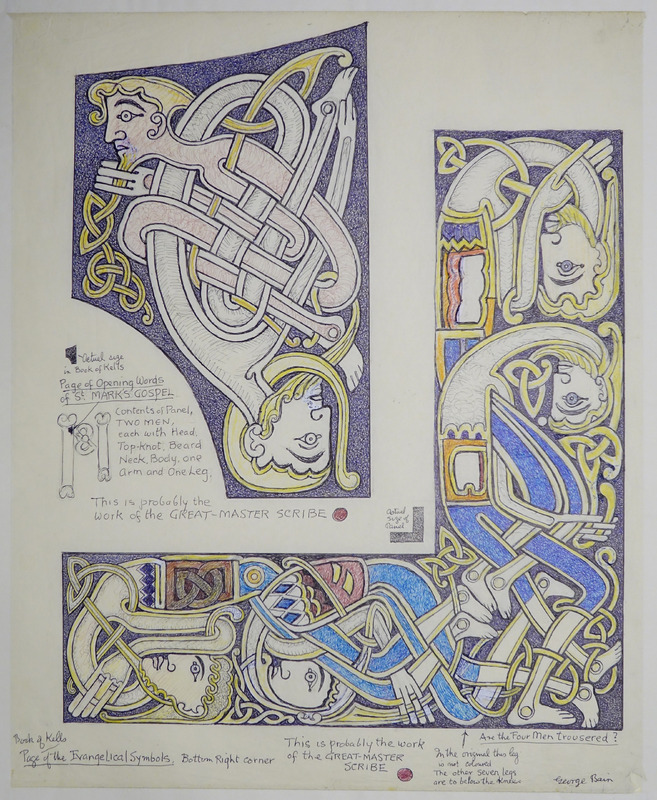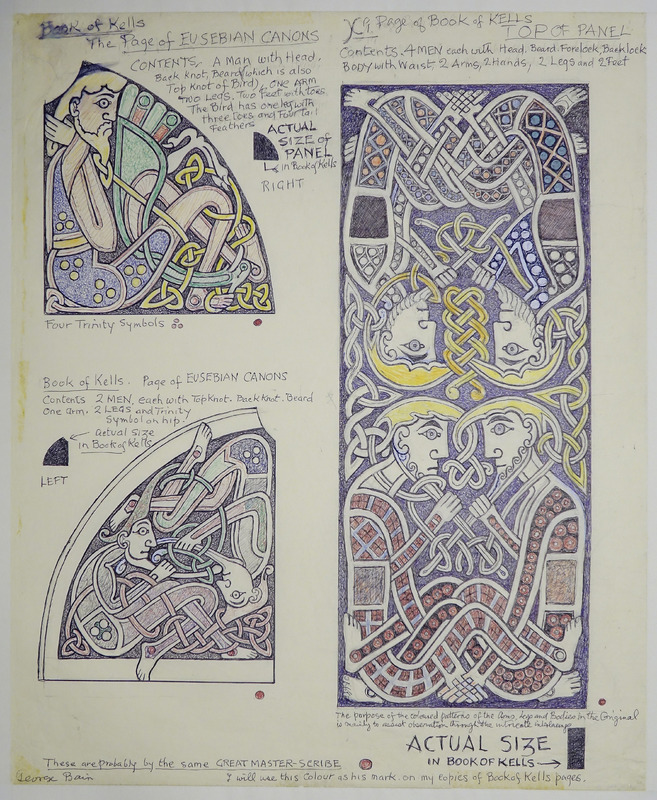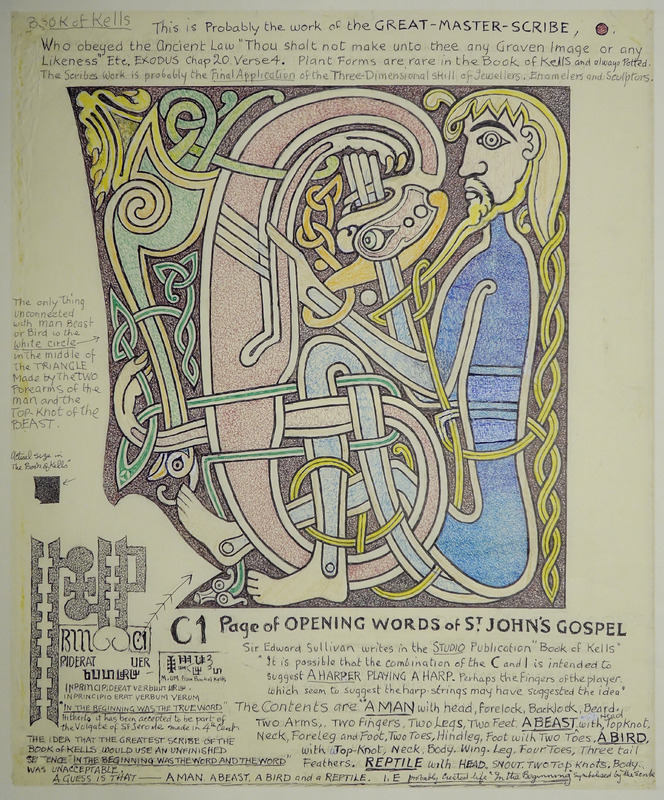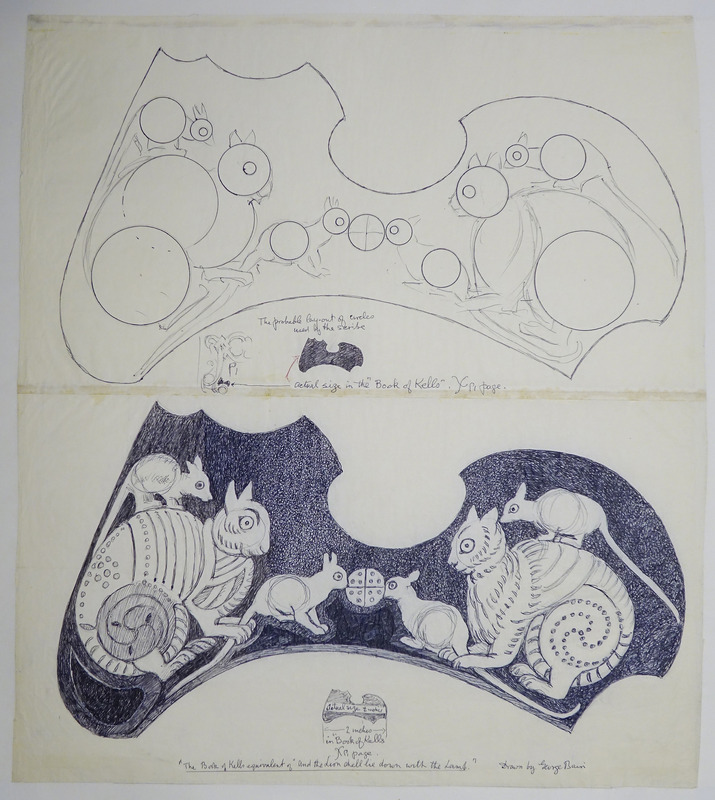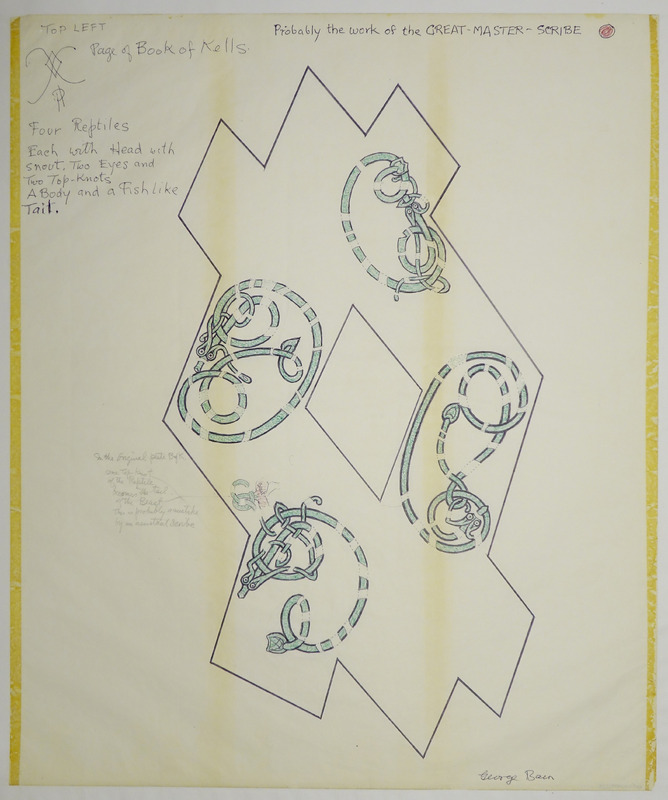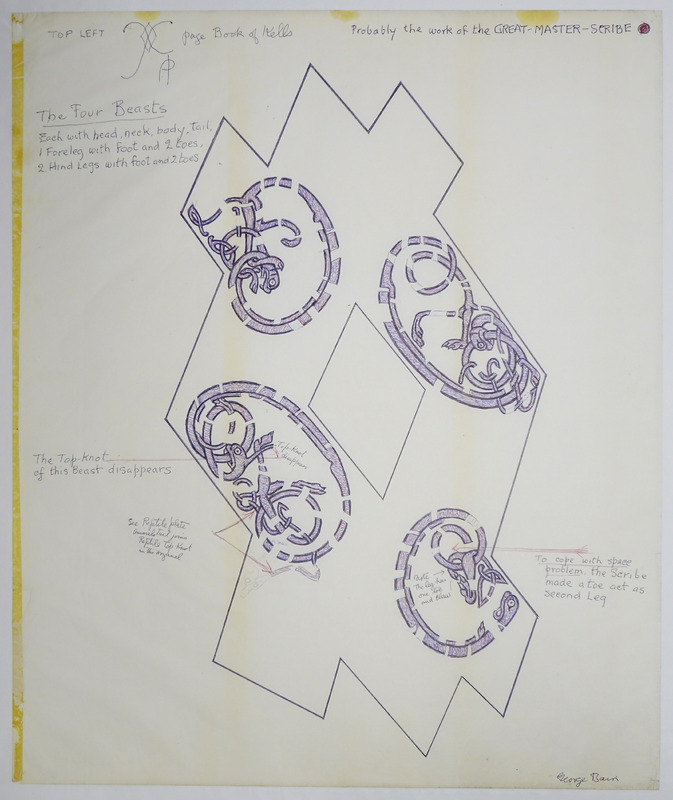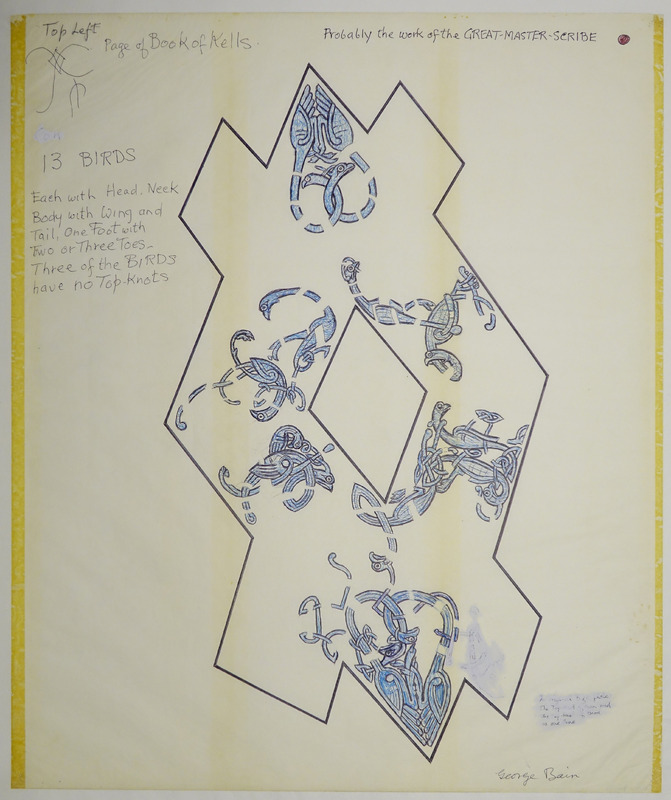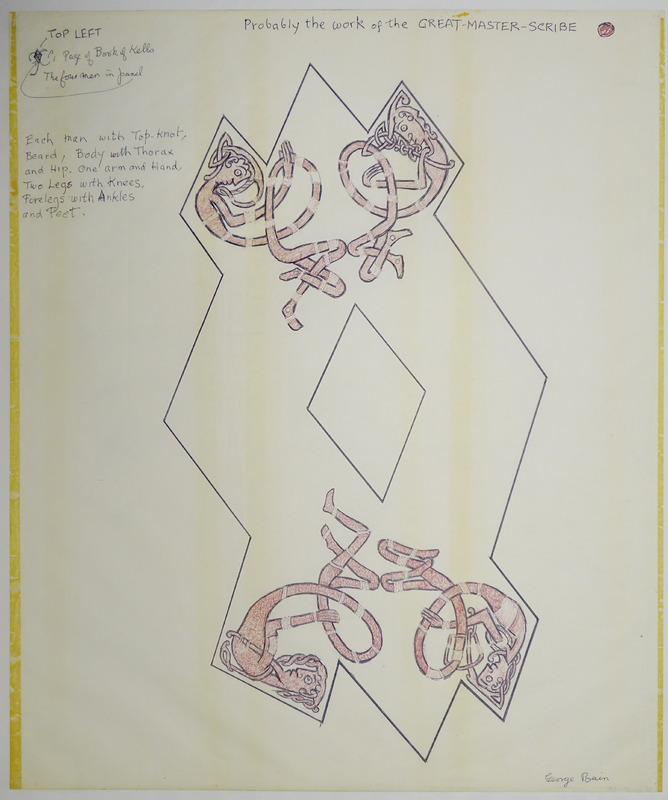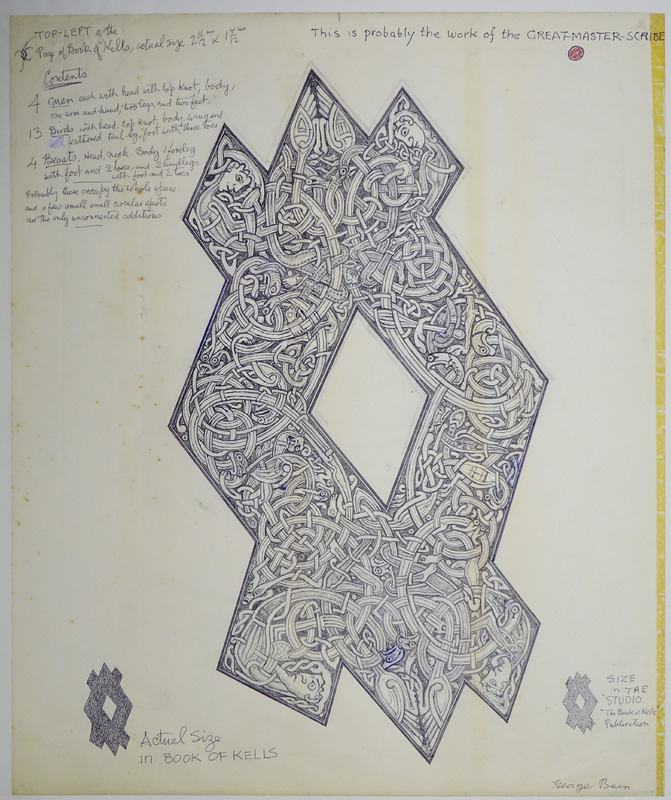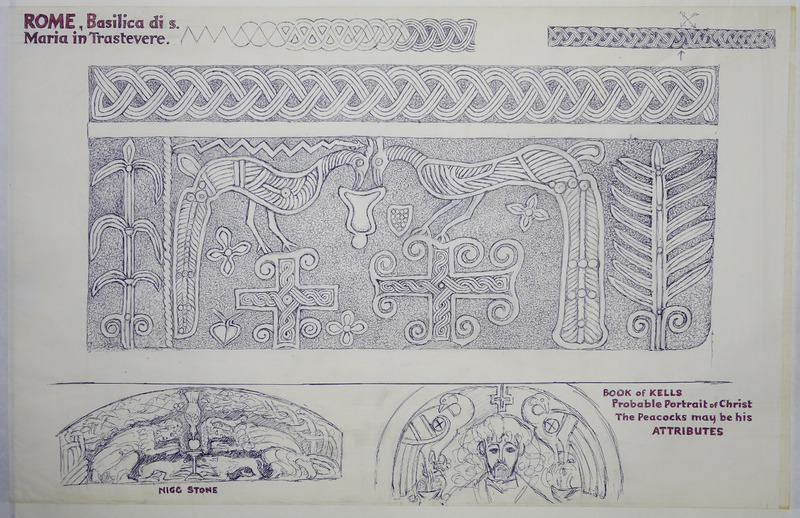The Book of Kells
The Book of Kells is one of the finest and most famous of a group of illuminated manuscripts in what is known as the Insular style, produced from the late 6th through the early 9th centuries in monasteries in Ireland, Scotland and England and in continental monasteries with Hiberno-Scottish or Anglo-Saxon foundations. Within the Book are manuscripts of the four Gospels of the New Testament written in Latin.
The fully developed style of the ornamentation of the Book of Kells places it from the late 8th or early 9th century. The Book of Kells follows many of the iconographic and stylistic traditions found in these earlier manuscripts. For example, the form of the decorated letters found in the incipit pages for the Gospels is surprisingly consistent in Insular Gospels. Compare, for example, the incipit pages of the Gospel of Matthew in the Lindisfarne Gospels and in the Book of Kells, both of which feature intricate decorative knot work patterns inside the outlines formed by the enlarged initial letters of the text.
The Book of Kells contains the four Gospels of the Christian scriptures written in black, red, purple, and yellow ink in an insular majuscule script, preceded by prefaces, summaries, and concordances of Gospel passages. Today, it consists of 340 vellum (calfskin) leaves, or folios. The vellum is of high quality, although the folios have an uneven thickness, with some being close to leather while others are so thin as to be almost translucent.
The manuscript is in remarkably good condition considering its great age, though many pages have suffered some damage to the delicate artwork due to rubbing. The book must have been the product of a major scriptorium over several years, yet was apparently never finished.
The Book of Kells has been on display in the Old Library at Trinity College, Dublin, Ireland, from the mid 19th century.
A drawing by George Bain from a folio within The Book of Kells.
The term "folio", from the Latin folium (leaf), has three interconnected but distinct meanings in the world of books and printing. It is firstly a term for a common method of arranging sheets of paper into book form, folding the sheet only once, and a term for a book made in this way. Secondly it is a general term for a sheet, leaf or page in (especially) manuscripts and old books, and thirdly an approximate term for the size of a book, and for a book of this size.
St Mark's Gospel
Drawing of two of the panels from The Book of Kells. Page of Opening Words of St Mark's Gospel.
Eusebian Canons
George Bain Drawing from Book of Kells. The Page of Eusebian Canons.
'The purpose of the coloured patterns of the arms, legs and bodies in the original is mainly to assist observation through the intricate interlacing'.
St John's Gospel
George Bain Drawing - Book of Kells. Opening Words of St Johns Gospel.
This is probably the work of a great master-scribe, Who obeyed the Ancient law "Thou shalt not make unto thee any Graven Image or any Likeness" Etc, EXODUS Chap 20, Verse 4.
Plant forms are rare in The Book of Kells and always potted.
The scribes work is probably the Final Application of the Three-Dimensional skill of Jewellers, Enamelers and Sculptors.
The only thing unconnected with the man, beast or bird is the WHITE CIRCLE in the middle of the TRIANGLE made by the two forearms of the man and the top-knot of the BEAST.
C1 Page of Opening Words of St John's Gospel.
Sir Edward Sullivan writes in the STUDIO Publication "Book of Kells" : " It is possible that the combination of the C and 1 is intended to suggest A HARPER PLAYING A HARP. Perhaps the fingers of the player. Which seems to suggest the harp strings may have suggested the idea".
The contents are A MAN with head, forelock, badlock, beard, two arms, two fingers, two legs, two feet. A BEAST with topknot, neck, foreleg and foot, two toes, hindleg, foot with two toes. A BIRD with topknot, neck, body, wing, leg, four toes, three tail feathers. REPTILE with head, snout, two top knots, body.
Animals
The probable layout of the circles used by the scribe.
The Book of Kells equivalent of "And the Lion shall lie down with the lamb."
